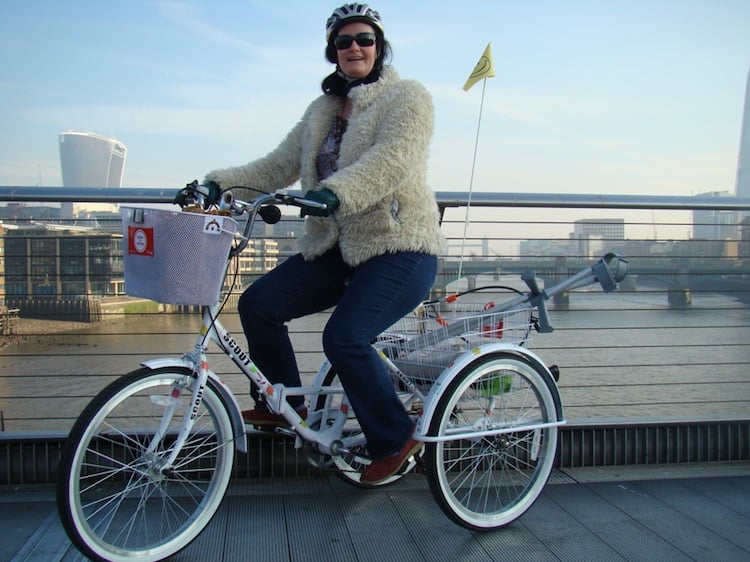Daisy is a disabled cyclist living in Islington, north London, who uses an electric-assist tricycle to get about. She has pleurisy (a lung condition), which can cause breathing difficulties, and finds it hard to walk long distances. For Daisy, her tricycle is liberating and acts as her mobility aid.
Unfortunately, over the past few months Daisy has been stopped a number of times by police officers, who have told her she is not allowed to cycle in pedestrianised areas, such as shopping centres, and have even threatened her with fines of up to £150 – despite explaining to them that she is using it as her mobility aid (just as you might a wheelchair or mobility scooter, which are permitted in such areas). Daisy thinks she is being unfairly penalised for choosing an active lifestyle.
Increasingly, Daisy feels she is the target of over-zealous police officers in her local area, where youth gang crime is rife. “There are aggressive gangs in the area, speeding through on their bikes”, she says. “They steal from people, taking their phones, and then cycle off quickly before the police can catch up with them…it’s easier just to pull me aside because I’m slower and it makes police officers feel like they’ve done something”. She goes on, “It makes me so angry. They are giving the little person a hard time”.

It’s not only a lack of recognition that disabled people might be using their cycle as a mobility aid that is the problem. Road and cycling infrastructure can create issues for users of non-standard cycles, too. Living close to a canal, Daisy has always enjoyed cycling along this route for leisure.
However, her local council has recently decided to install a series of physical barriers aimed at reducing the speed of cyclists. Whilst this might be deemed a welcome and necessary measure for many residents, for Daisy this means that she will be unlikely to use the route any longer, as she is worried that the barrier will not accommodate the width of her tricycle. The design of most road and cycling infrastructure assumes cyclists will be using a standard, two-wheeled bicycle, which is the problem.
In the year ahead, Daisy plans to continue campaigning for greater recognition for disabled cyclists. “I’m going to put a notice or sticker on my tricycle”, she says, “which will identify me as a disabled cyclist”. She also wants to contact Motability to ask why adapted cycles are not offered as part of their scheme for disabled people, despite a range of cars being offered, which are much more expensive option. To Daisy, who wants a more active and healthy lifestyle, this doesn’t seem to make sense. She is also writing to Sadiq Khan, the Mayor of London, to urge action on London’s air pollution problem.
